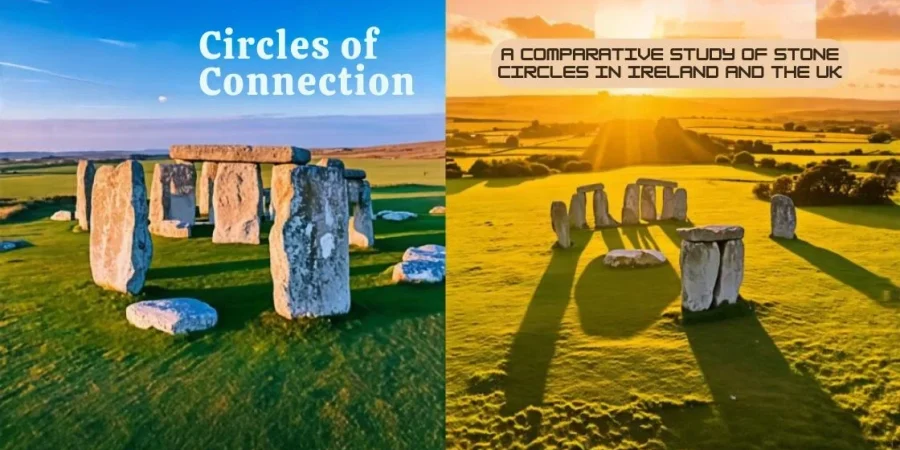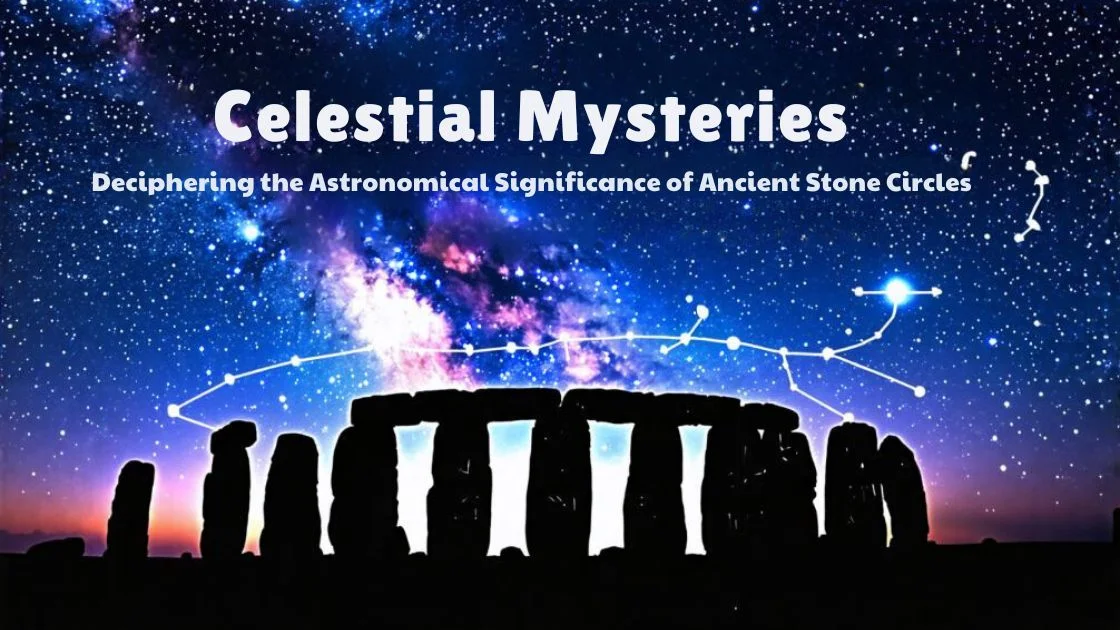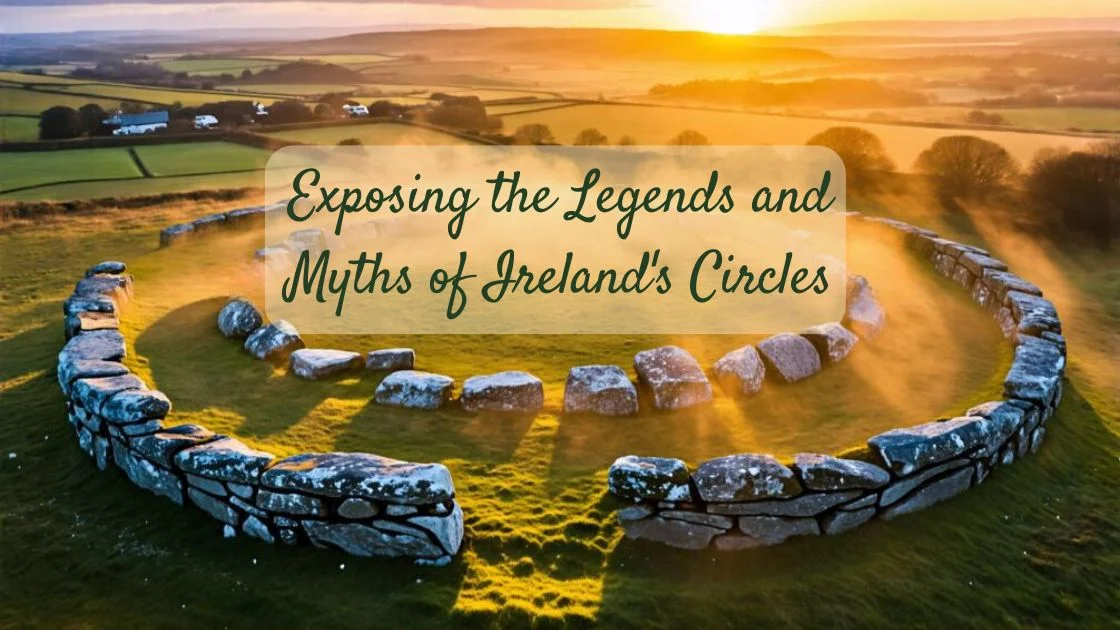You’re about to uncover the enduring mystery of ancient stone circles in Ireland and the UK.
In this scholarly comparative study, you’ll analyze their design, purpose, and legacy.
As you delve into the intricacies of these Neolithic monuments, appreciate the freedom to interpret a past that’s not fully understood.
Engage with the evidence and embrace the chance to connect with our ancestors through these enigmatic structures.
Prepare for a thought-provoking journey into the heart of prehistory.
Key Takeaways
- Stone circles in Ireland and the UK were constructed between 3000 and 1500 BCE using local stones, reflecting diverse practices and purposes.
- Stone circles demonstrate the ingenuity and spiritual life of ancient peoples, with a sophisticated understanding of geometry, space, and celestial and seasonal alignments.
- Stone circles vary in scale and composition, align with celestial events, and signify the ancients’ quest for celestial connection and understanding.
- Comparative analysis and ongoing study of stone circles provide insights into available resources, cultural connections, construction methods, and ancient rituals and beliefs.
Introduction: Overview of stone circles as important Neolithic monuments in Ireland and the UK
You encounter stone circles as enigmatic testimonies of the Neolithic and Early Bronze Age, with their genesis rooted in the period between 3000 and 1500 BCE across Ireland and the UK.
These structures, ranging from the expansive rings of Stonehenge to the lesser-known but equally significant Grange circle, are constructed from local stones, often sited near other megalithic works.
Their varied dimensions and stone counts reflect a diversity of practices and purposes, inviting a comparative study to elucidate their roles in ancient societies.
Brief background on their construction during Late Neolithic/Early Bronze Age
Stone circles embody the ingenuity and spiritual life of the Late Neolithic and Early Bronze Age peoples who constructed these enigmatic monuments across Ireland and the UK. As megalithic structures, they represent a significant architectural venture, utilizing local materials and reflecting a deep connection to their environment.
These neolithic monuments vary in size and form, yet consistently convey a sophisticated understanding of geometry and space. You can discern a deliberate selection of stones—some shaped by human hands, others chosen for their natural contours. Their precise functions elude modern understanding, yet their alignments suggest celestial and seasonal awareness, hinting at a complex societal structure that valued astronomical observation.
The preservation of these circles speaks to your recognition of their historical and cultural significance, ensuring their legacy endures.
Stone Circles in Context
You observe stone circles across Ireland and the UK as standing testaments to Neolithic ingenuity, with their circular formations often aligning with celestial events. These structures vary widely in scale and composition, reflecting the diverse geologies from which they arose and hinting at a complex socio-cultural significance within their respective communities.
Despite extensive study, you’re reminded that their precise ritualistic functions remain enigmatic, challenging scholars to interpret the silent narratives etched in stone.
Typical features: circular placing of stones, minimal shaping, astronomical alignments
One typically observes that the stones in these ancient circles are arranged with minimal alteration to their natural form, often aligning with celestial bodies and events. You discern a deliberate intentionality in their placement, signifying a sophisticated understanding of astronomical alignments. Researchers propose that these configurations weren’t merely for aesthetic or communal purposes but held profound ritualistic significance.
The alignment with solstices and equinoxes suggests that the circles served as calendars or observatories, enabling the tracking of seasonal cycles vital for agricultural and ceremonial activities. The stones stand as silent sentinels to the ancients’ desire for harmony with the cosmos, embodying a physical manifestation of their quest for celestial connection and understanding.
Range of sizes, number of stones
Delve into the diversity of stone circles across Ireland and the UK, where you’ll find a striking range in size and stone count, varying from intimate clusters to expansive assemblies. These prehistoric structures exemplify monumentality in their varied scales and demonstrate complex social dynamics of their creators.
| Location | Diameter Range | Stone Count |
|---|---|---|
| Ireland | 2-40 meters | 5-30 stones |
| Scotland | 8-100+ meters | 3-50+ stones |
| England | 10-110 meters | 4-100+ stones |
Archaeoastronomy has suggested that some circles align with celestial events, indicating sophisticated knowledge of the cosmos. The variability in dimension and number might reflect the intended use of each site, whether for ceremonial gatherings, celestial observations, or social display. Your understanding of these ancient places is enhanced by considering their spatial contexts and the freedom these configurations provided for different communal activities.
Materials reflect local geology
Exploring the composition of stone circles further reveals a deep connection to the landscape, as their materials mirror the local geology surrounding each site. This adherence to utilizing local stones underscores the importance of landscape archaeology in understanding our cultural heritage.
- Local geology as a resource:
- Primary stone types: You’ll find sandstone, limestone, and granite, each chosen for its abundance and durability.
- Variations in stone selection: This reflects not only resource availability but also the ingenuity and adaptability of prehistoric communities.
The choice of stone serves as a testament to the intimate relationship between the builders and their environment, allowing you to discern patterns in site selection and construction methods. It’s a nuanced aspect of ancient societies that emphasizes their connection to and reverence for the natural world.
General ritualistic/ceremonial significance, still not fully understood
You’ll find that, despite extensive research, the ritualistic and ceremonial purposes of stone circles are still shrouded in mystery, offering a glimpse into the enigmatic practices of our ancestors.
These megalithic structures, often aligned with celestial phenomena, suggest a sophisticated Neolithic cosmology, indicating that ancient societies sought a harmonious connection with the cosmos. The precision of their placement implies deliberate intentions, likely rooted in ritual practice, perhaps to mark seasons or celebrate cycles of life and death.
Yet, the lack of definitive written records from the era means that interpretations remain speculative. Archaeological evidence—including artefacts and ecofacts—provides some clues, but you’re left to ponder the true extent of the circles’ significance, as they stand as enduring monuments to prehistoric ingenuity and spirituality.
Major Examples in Ireland and the UK
As you examine prominent stone circles like Newgrange and the Hill of Tara in Ireland, and Callanish, Avebury, and Stonehenge in the UK, you’ll notice distinct architectural features and regional variations.
These sites not only reflect the sophisticated engineering and astronomical knowledge of their creators but also their deep spiritual and social significance.
A comparative analysis reveals how material selection, construction techniques, and geographic orientation provide insights into the diverse cultural practices of Neolithic and Bronze Age societies.
Newgrange
While Newgrange isn’t a stone circle in the traditional sense, it’s a crucial part of the megalithic complex in Ireland’s Boyne Valley, predating Stonehenge by several centuries. This grand passage tomb exemplifies Neolithic astronomy with its alignment to the winter solstice sunrise.
- Newgrange’s Significance
- *Architectural Marvel*: Showcases precise construction that has withstood millennia.
- *Astronomical Precision*: Aligns with the rising sun on the winter solstice, illuminating its inner chamber.
- Demonstrates advanced Neolithic understanding of celestial events.
- Suggests a society deeply connected with cosmic cycles.
Your appreciation for freedom leads you to grasp the significance of Newgrange—it’s not just a historical monument but a testament to the autonomous ingenuity of our ancestors. It’s a symbol of their ability to understand and celebrate the freedom of the cosmos through Neolithic astronomy.
Tara
Exploring Tara’s ancient landscape, you uncover a ceremonial complex pivotal to Ireland’s spiritual and political history, rivaling the grandeur of stone circles across the UK.
The Hill of Tara, rather than a stone circle, is an archaeological complex that includes a number of ancient monuments. Among them, the most renowned is the Lia Fáil, the Stone of Destiny, where High Kings were once inaugurated.
As you delve into Tara Hill’s significance, you discern its role as a powerful symbol of sovereignty and ritual. Its precise function remains elusive, but evidence suggests it was a site of assembly and celebration, possibly linked to solstice alignments.
Unlike the monolithic brethren in the UK, Tara’s influence permeates through cultural consciousness, retaining a mystique that transcends physical form.
Callanish
You’ll often find yourself mesmerized by the prehistoric grandeur of the Callanish Stone Circle, a remarkable testament to Scotland’s Neolithic heritage. Situated on the Isle of Lewis, Callanish stands as one of the most impressive stone circles of Ireland and the UK.
Its significance is underscored by:
- Analytical insights:
- Radiocarbon dating suggests a construction date around 2900 BCE.
- The site’s astronomical alignments indicate a complex understanding of celestial events.
- Scholarly details:
- Callanish’s cruciform layout is unique amongst its contemporaries.
- The stones’ placement and orientation invite interpretations of ritualistic significance.
Such analytical and scholarly examinations not only deepen your appreciation for Callanish but also highlight the intricate connections between the many stone circles dotting the landscapes of Ireland and the UK.
Avebury
Why haven’t you visited Avebury yet, where an immense Neolithic stone circle encompasses an entire village, offering a profound glimpse into Britain’s ancient past? Unlike its more famous cousin Stonehenge, Avebury’s megalithic complex is the largest in Europe, and its accessibility symbolizes a freedom to connect with heritage without barriers.
In your exploration, you’d find that Avebury differs from Stonehenge in its open layout. While Stonehenge’s stones are more uniformly shaped and arranged, Avebury’s varied stones speak to a less rigid, perhaps more communal purpose. Scholarly analysis suggests that Avebury’s stones were sourced locally, emphasizing a relationship with the immediate environment. This connection to place adds a layer of intimacy to Avebury’s narrative, distinguishing it within the broader story of Neolithic Britain.
Stonehenge
As many as 900 stone circles dot the landscapes of Ireland and the UK, with Stonehenge standing out as the most iconic among them. Your understanding of these ancient sites can deepen through comparative archaeology, a field that Aubrey Burl greatly contributed to.
Consider:
- Stonehenge’s Unique Features
- Precisely aligned with the solstices
- Sophisticated lintel construction
- Comparative Insights
- Similarities in celestial alignments across sites
- Variations in local geology reflected in stone choices
This scholarly examination not only satisfies curiosity but advocates for the preservation of these structures.
You’re invited to explore how they embody a legacy of astronomical precision and communal effort—a freedom from modernity’s constraints, revealing a connection to our Neolithic ancestors’ ingenuity and spiritual expression.
Comparative Analysis: Examining differences and similarities in design, layout, construction
You’ll find that the rock types used in these ancient stone circles not only offer clues to the resources available but also suggest potential cultural connections between distant communities.
The orientations towards celestial bodies in many of these sites underscore the cultural weight placed on solar and lunar events, reflecting a sophisticated understanding of astronomy.
Meanwhile, the varied artifacts and human remains discovered within these circles provide a tangible link to the rituals and activities once performed there, painting a picture of the past that’s as complex as it’s fascinating.
Rock types used can suggest cultural connections
In examining the stone circles across Ireland and the UK, you’ll notice that the choice of rock types often points to underlying cultural links. These stones provide a rich tapestry of the cultural landscape, revealing much about the communities that built them.
- Stone selection
- Local availability vs. trade and transport
- Cultural significance of certain rock types
The uniformity or diversity in stone composition within and between regions can suggest shared practices or distinct cultural identities. For instance, the Ring of Brodgar in Orkney exhibits a careful mix of local sandstone varieties, possibly symbolizing a unification of different groups. Analyzing the rock types, you can discern patterns that reflect the complex social networks of our ancestors, and appreciate the freedom they had in expressing their cultural affiliations through these monumental landscapes.
Astronomical orientations reveal cultural importance of solar/lunar events
While you explore the ancient stone circles of Ireland and the UK, you’ll find that their alignments with the sun and moon aren’t mere coincidences but deliberate designs signifying the deep cultural significance of celestial events. The precise orientation of these megaliths often correlates with solstices and equinoxes, hinting at a sophisticated understanding of astronomy.
Carrowmore, for instance, exhibits a dense cluster of circles, some of which align with solar movements, underscoring the shared cultural practices across these regions. Alexander Thom’s work in archaeoastronomy has been pivotal in revealing these alignments, offering insights into the prehistoric peoples’ calendar systems.
Such comparative analysis underscores the similarities in design and construction, implying a widespread cultural tradition that revered solar and lunar cycles as fundamental to their freedom of life and timekeeping.
Artifacts and remains hint at rituals and activities
Beyond their astronomical significance, the artifacts and remains you find within these ancient stone circles provide a tangible link to the rituals and activities that once took place there. Through careful analysis, you’ll discern that these sites were more than mere markers of time; they were integral to the spiritual and communal practices of prehistoric societies.
Delving into these remnants, you’ll uncover patterns that reflect the intricate social fabric woven by our ancestors. The stones stand as silent witnesses to a past that yearns for understanding, beckoning you to explore the freedom these prehistoric communities sought through their celestial connections.
- Comparative Analysis:
- Differences:
- Variations in stone sourcing and shaping techniques
- Disparate burial customs across regions
- Similarities:
- Evidence of ceremonial gatherings
- Artifacts suggesting Bronze Age trade and interaction
Archaeological Insights: Changing techniques and time periods point to cultural evolution
You observe the evolving craftsmanship in stone circles, indicating shifts in prehistoric societies’ skills and ideologies. Variations in construction techniques and stylistic elements across time periods reveal how cultural practices adapted to changing environmental and social landscapes.
These ancient structures offer a tangible narrative of human ingenuity, reflecting a progression from functional to more symbolically complex communal spaces.
A window into prehistoric societies and cosmologies
How do stone circles offer you a glimpse into the minds and societies of our prehistoric ancestors? These enigmatic structures, unearthed through comparative analysis, provide a tangible connection to the rituals and beliefs of those who engineered them. Consider the stone circle at Lough Gur; it stands as a testament to the astronomical knowledge and spiritual depth of its creators.
- Archaeological Techniques:
- Radiocarbon dating pinpoints construction periods
- Archeoastronomy reveals celestial alignments
Cultural Significance:
- Varied sizes indicate social hierarchy or population
- Orientation and location reflect cosmological significance
Your freedom to explore these sites today bridges millennia, inviting you to ponder the evolving techniques that shaped these circles and the shifting cosmologies they were meant to embody.
Ongoing Study and Preservation
You must recognize that despite their historical significance, many stone circle sites across Ireland and the UK remain vulnerable to environmental and human threats.
Your understanding of ongoing preservation efforts is crucial, as they not only protect these ancient monuments but also facilitate further scholarly research.
Scholars meticulously analyze the impact of conservation strategies on the integrity and authenticity of these stone circles, ensuring that the study of their origins and functions continues to advance.
Many sites still at risk, highlight preservation efforts
Despite many stone circles being centuries old, several still face threats today, and it’s crucial to examine the preservation efforts underway to protect these historic sites.
Consider:
- The Rollright Stones
- *Conservation plans to mitigate damage from erosion and human interaction*
- *Engagement with local communities to foster stewardship*
The Rollright Stones are an example of a stone circle that requires preservation efforts. Conservation plans have been put in place to mitigate damage from erosion and human interaction. Additionally, engaging with local communities is important to foster stewardship and ensure the long-term preservation of the site.
- The Plantation of Ulster sites
- *Assessment of the impact of agricultural practices on site integrity*
- *Advocacy for legal protection and responsible land use*
The Plantation of Ulster sites also face threats that require preservation efforts. Assessing the impact of agricultural practices on site integrity is crucial to understand and mitigate any damage. Advocacy for legal protection and responsible land use is also important in ensuring the sites’ long-term preservation.
Conclusion: there is still much to learn through comparative approach
You’ve uncovered the cultural tapestry these ancient stone circles represent, yet the comparative analysis underscores that our understanding remains incomplete.
By scrutinizing the varying architectural nuances and regional materials, you can discern patterns that hint at broader prehistoric cultural exchanges.
Therefore, it’s imperative you continue to explore these ‘Circles of Connection’ for the untold insights they hold on social structure and cosmological significance.
Stress cultural significance of these “Circles of Connection
Why haven’t we unraveled all the secrets of these stone circles when they’re so crucial to understanding our shared cultural heritage? The enigmatic nature of these monuments, spanning from the Late Neolithic to the Iron Age, is a testament to the sophisticated yet elusive Celtic culture that thrived across Ireland and the UK.
Comparative study reveals:
- Varying construction techniques
- Use of local materials
- Diversity in size and stone selection
- Possible functions
- Ceremonial
- Astronomical alignments
- Social or political gatherings
Your pursuit of freedom in knowledge parallels the quest to decode these ancient landscapes. Despite advanced methodologies, the stone circles guard their past tenaciously, offering you a chance to contribute to the tapestry of human history through continued comparative analysis.
Conclusion
As you reflect on these ancient stone sentinels, consider the profound connections they reveal. Despite varied designs and eras, they share a common thread of human ingenuity. Your comparative study has unearthed a tapestry of Neolithic culture, yet mysteries persist.
It’s clear that ongoing research and preservation are vital, as each stone circle’s tale is a crucial piece of our collective past. There’s much left to learn, and each discovery promises to deepen our understanding.



